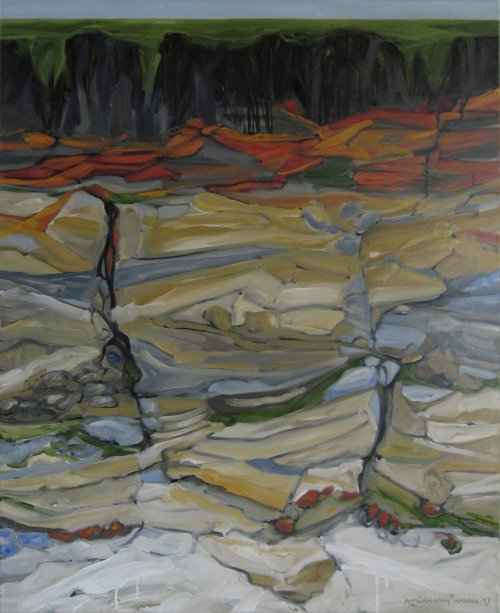
medium: Oil on Canvas
format: 100 x 120 cm
year: 2013
These paintings have emerged from a study and an emotional connection with the various sediments of the coastal region.
Subatlanticum is the youngest of the Holocene era that dates back to 14,000 years ...
This layer dates from the time - 2,000 years ago - when the Roman legionaries, with their shiny helmets and iron swords, build the first settlements on the sand ridge as an extension of their territory ...
Currently we are looking below the surface for a sediment layer, to cover-up dangerous nuclear waste from nuclear power plants and atomic bombs that will destroy the purity and honesty of Mother Earth ...
Can we let this happen ... ??
Before the creation of the paintings of a new theme, I draw at least thirty preliminary sketches.
By this way I can fully empathize with the theme. That is very important to me, in order to process the created emotions.
After some further study of the different colors of the sedimentary layers, the emotions formed therefrom, I realized that I have excavated deeply into the past.
I hope to stem the dumping of nuclear waste with these paintings.
The paintings are the fruit of a long and intense process, which ultimately was completed by an inner compulsion.
The eternal return of the equivalent is tangible, and yet elusive ...